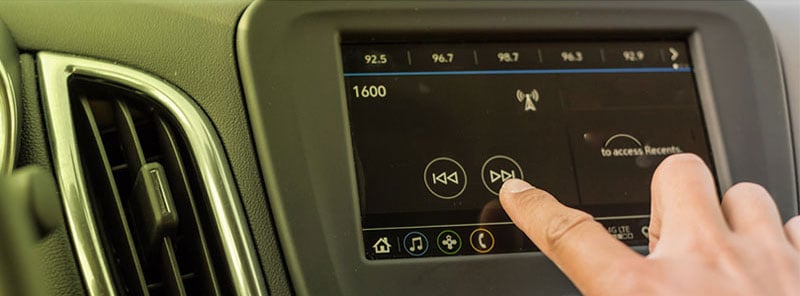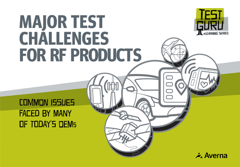
It is already accepted that the infotainment system is changing the way people buy cars. The experience a person feels when getting into their car and going somewhere has to be as comfortable as being in their living room. For some, it offers the reprieve from a bad day or it’s the time spent before getting somewhere they don’t want to be. It’s an escape. The last thing someone wants is to have their me-time interrupted. But even with all the toys that come with an infotainment system today, live broadcast radio is still the most popular form of entertainment in the car. 82% of people will not buy a car without a radio installed.
The on-going demand of radio while driving has evolved over the years. A car radio was first introduced in 1930, offering a vast selection of AM radio. Since then, music in the car has come a long way. FM was introduced and grew, but carmakers wanted to offer more. Suddenly there were 8-tracks (shout out to Gen X!), then cassettes, CDs, and MP3s. But even with the newer options coming in, people still preferred listening to the radio overall. Today, 75% of what is listened to in the car is live. So to give the people what they want, different mediums of radio are not only available, but are already mainstream.
Analog Radio:
Analog radio works by having a single transmitter shoot out audio signals and is carried along radio frequency waves. People select the channel or station they want to listen to by selecting the appropriate frequency. There is a limited distance that can be travelled while listening to analog radio before losing reception.
Satellite Radio:
Only popular for radio broadcasting in North America, satellite radio is a broadcasting service generated from dedicated satellites. They cover a much larger geographical area than analog but additional hardware is required to receive this service, at an additional cost.
Internet Radio:
Radio stations are now benefitting from online streaming to broadcast their over-the-air services. This allows them to send their signals without limitations. They are also able to stream a completely different broadcast online as they would over the radio and can travel around the world. An active internet connection is required and may come at a high cost inside a vehicle.
Digital Radio:
Digital Radios offer listeners a processed signal of sound which transforms what people hear into patterns of digits. There is less risk of interruption when listening to digital radio and it offers additional interactive features, such as real-time traffic. Transmissions may be limited on a standard radio.
Digital radio is growing more and more in popularity over analog for the car. The issue the platform is facing is simply that the world cannot agree on a single standard. Depending on where you are in the world, digital radios broadcast differently. Each are different in their own respect.
HD Radio:
Xperi Corporation, formerly iBiquity Corporation introduced HD Radio in 2003, and is still in use today in the US & Canada. AM and FM stations are both using HD Radio services. It broadcasts both digital and analog signals, so they are compatible with old and new radios using the same channel.
ISDB-TSB:
Also developed in 2003 and specific to Japan ISDB-TSB is digital radio used for multi-program services. It transmits using VHF channels. What’s interesting about it is that the ISDB radio channels are merged with the ISDB digital TV channels within a similar broadcast.
DRM:
DRM is an international platform, which was developed as a substitution for AM. It’s used similarly to an analog signal and can share the same channel as an analog station with some limitations. When DRM+ was introduced in 2007 for the VHF band it was an enhanced version, creating a surround sound feel.
DAB:
Primarily used in Europe and available in 40+ countries, DAB cannot share a channel with an analog transmission and uses its own band. A DAB Broadcast requires more bandwidth because it offers multi-program services. More recently, improved versions of DAB were released including DAB+ and DAB-IP.
What Are People Listening to?
Again, the goal of all these platforms is to offer the user the best audio experience inside the car. While analog radio is pretty much standard in every car, in Europe last year 4.4 million cars were sold with DAB+, 7% higher than the year before. Several countries have DAB as a standard feature in the vehicle and as of December 2018, the European Electronics Communications Code Directive stated that all new cars in the EU must have digital radio before 2021.
DAB - A Radio Service You Can Count On
So how reliable is DAB? It’s pretty great, however your radio may not pick up signals very clearly if it is too far from the closest transmitter. Sounds like an analog problem in a digital world? Not only is it different, but it’s also solved. To review, FM broadcasts a specific transmission over a single channel whereas a single digital transmitter broadcasts all the channels. The concern is being close enough to the transmitter to receive them. It has since become a non-issue, due to DAB Service Linking. A more descriptive name for this feature would be DAB Service Switching. What’s happening is that both DAB and FM receivers are continually tracking signal quality while a car is on the move. Regardless whether you are located in the country or continent, it detects the best signal to use and automatically switches between the 2. Essentially, drivers (or co-pilots) can hear what they want without interruption and don’t have to manually go through stations to find what they are trying to listen to.
All the Cool Kids Are Doing It
Not only is this feature a huge improvement for the user experience, but it is also a mandatory specification that automotive digital radio products need to meet. So as if testing an infotainment system wasn’t complicated enough with the multiple protocols a good system needs to have, it needs to evolve with the changing standards that people are really using. Having flexibility in your infotainment tester is the key to quality and saving costs in manufacturing. The automotive industry is moving faster than any other, and it’s being driven by the enjoyment of being in the car. Having a solution dedicated to the quality of the infotainment system is not optional, so it needs to be ready to grow and go with what the consumer is looking for.
For more information on Infotainment testing, including DAB Service Linking, please contact Averna.
| AM | Amplitude Modultated |
| FM | Frequency Modulated |
| ISDB-TSB | Integrated Services Digital Broadcasting – Terrestrial Sound Broadcasting (Japanese Standard) |
| DAB | Digital Audio Broadcasting |
| DRM | Digital Radio Mondiale (Mondiale stands for Worldwide in Italian, and French) |
What You Need to Know About RF Testing.
Get in touch with our experts or navigate through our resource center.
Read our free eBook for an overview of the main challenges to face when testing RF devices.

